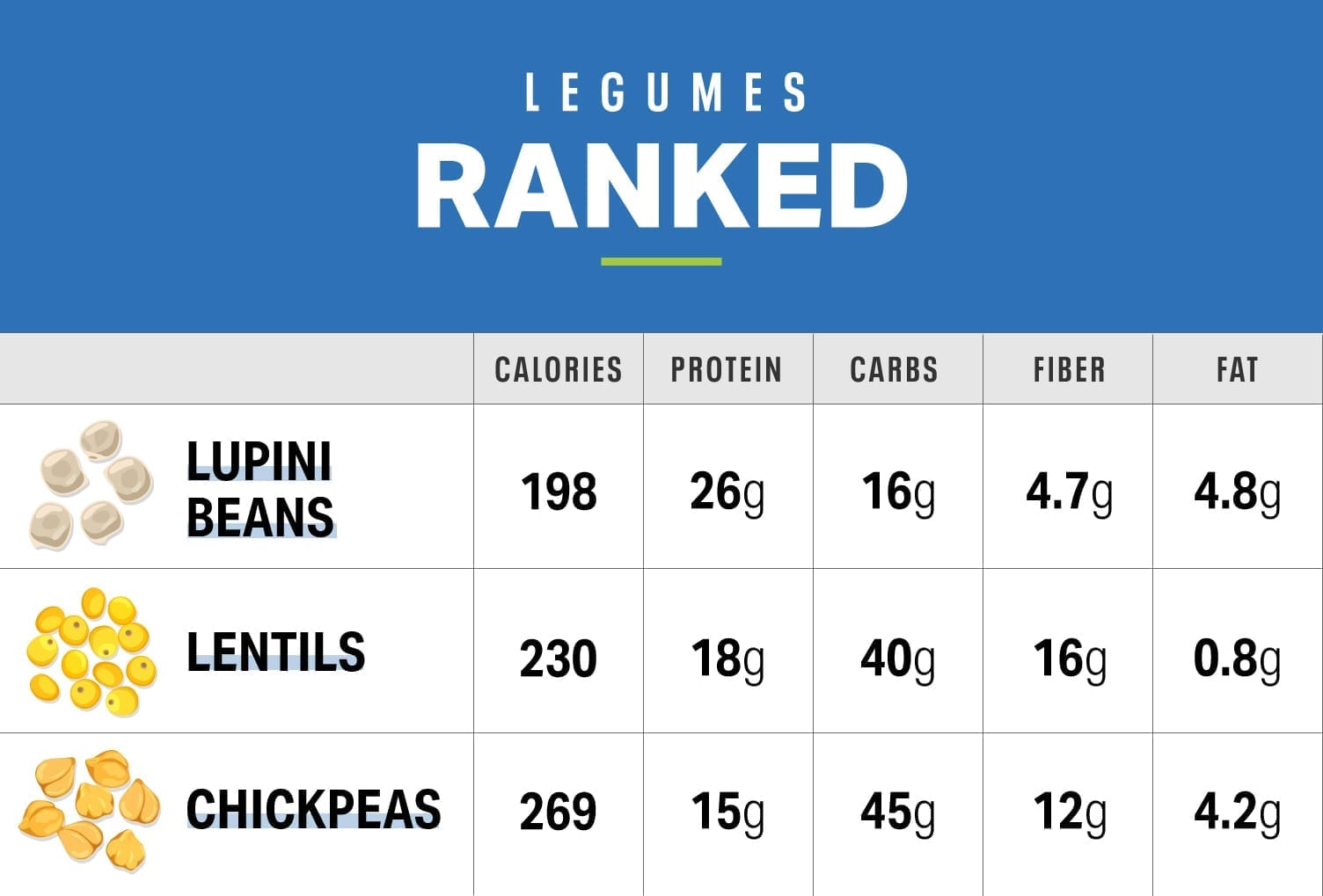If you’ve been down a grocery aisle lately, you might’ve seen products containing lupini beans gracing the shelves. These protein-packed beans have found their way into bars, ground up to create protein powders, and even churned into hummus. Nutritionists are deeming them one of the up-and-coming superfoods and thus, lupini beans seem to be having a moment. Here is what to know about this new plant-based commodity.
“Lupini or lupin beans are seeds from the lupinus albus plant,” explains Paris-based nutritionist Lucie Villeneuve. She adds that they are technically legumes, like chickpeas or edamame and are a traditional Mediterranean food. “Lupini beans are also often served as appetizers or snacks in Italy, Spain and Portugal,” Villeneuve adds.
Elizabeth Murphy, a Boston-based certified nutritionist says lupini are native to two separate continents: Eurasia and South America. “They were a popular crop with the Romans, who spread their cultivation throughout their empire. They were also enjoyed by the Incan Empire, in Peru,” she explains. And the beans have even dated back to the days of ancient Egypt. BRAMi, a company that manufactures fermented lupini beans, says lupini seeds were found in the tombs of Pharaohs.
Lupinis have been around for a while but Trista Best, a registered dietitian in Dalton, Georgia, says the lupini bean is beginning to make a name for itself in the United States and is catching the attention of the health food industry. “The nutrient quality is the primary reason lupini beans are getting so much attention as of late,” she explains. “A serving of lupini beans (1 cup) provides a significant amount of nutrients and little calories.”
Registered dietitian Megan Wong notes that lupini beans are a great source of protein, especially for those who follow plant-based diets. “Lupini beans are the perfect vegan protein source, providing more protein than any other legume, with the exception of soybeans,” she explains. While most legumes, including chickpeas, black beans, kidney beans and navy beans provide 15 grams of protein per cup, Wong reveals “lupini beans have a whopping 26 grams per cup.”
Elliot Reimers, a certified nutrition coach in Idaho Springs, Colorado, agrees. “Furthermore, vegans must be careful to consume adequate amounts of complete proteins in their diet (adequate amounts of complete proteins are typically from animal sources), and this hits that mark,” he says. And per Reimers, lupini beans contain omega-3’s, which can be especially beneficial for those on a strict vegan diet.
Christine Bendana, a culinary nutritionist from Austin, Texas, and the founder of meal plan service www.PrepYoSelf.com, provides the following breakdown comparing lupine beans to other legumes:

Thus, 1 cup of lupini beans has fewer calories, which she says is beneficial if someone is focused on weight loss. “Lupini beans also have way fewer carbs, which would make them a preferred choice if someone is following a low-carb diet or keto lifestyle,” Bendana adds.
Pam Fullenweider, a Houston, Texas, based registered dietitian and founder of Mediterranean diet resource Fully Mediterranean, says, “lupinis are also a good source of prebiotic fiber or the type of fiber that feeds the healthy bacteria in our guts.”
READ MORE > EVERYTHING YOU NEED TO KNOW ABOUT BEANS
And, she notes that the Mediterranean diet, which has been proven in clinical research to be effective at promoting health and preventing disease, encourages regular consumption of legumes. “Legumes contain protein, fiber, vitamins, minerals and antioxidants, all of which help promote health,” she adds.
Lupini beans are unpalatable in their natural state and need a long soaking period before they can be edible. But once properly prepared, they can be eaten as a healthy snack or an appetizer before a meal.
To incorporate them into your meals, toss cooked lupini beans into leafy green salads, over zoodles, pasta or steamed veggies. “Try pureeing them into a hummus dip and squeezing in half a lemon for a zesty flavor,” suggests Daryl Gioffre, a New York City-based nutritionist who works with clients like Kelly Ripa and Ryan Seacrest. Lupini beans can also be used as a protein source in a dish to replace animal protein, or as a substitute for other beans in soups, stews, burritos and dips.
Lupin-derived ingredients are also used in flour to make pasta, cake mixes, cereals and additional baked goods. “Lupini bean flour is marketed as a gluten-free alternative to traditional whole-wheat flour and has more protein and fiber and fewer carbohydrates per serving than a wheat-based flour,” says Fullenweider. Mitchelle Wright, a registered dietitian and nutritionist from New York and founder of healthy living blog Kitchenvile.com, shares that lupini beans are a great source of vitamin B, zinc, magnesium, phosphorous, potassium and calcium. “Therefore lupini beans are known to improve the nutritional value of baked goods, especially gluten-free products,” she says.
Unlock an experience that’s like having a dietitian, trainer and coach — right at your fingertips. Sign up for Premium for expert guidance and exclusive tools to help you reach your personal health goals.




